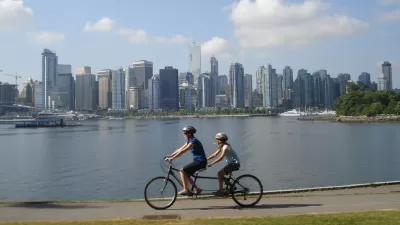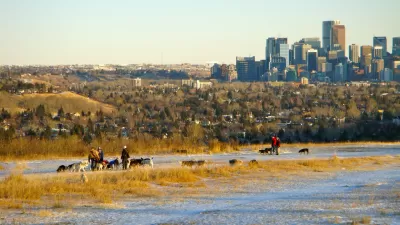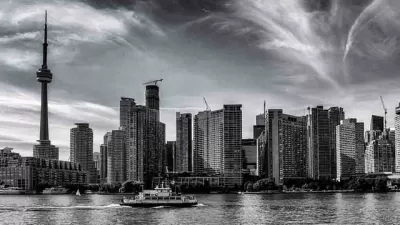Vancouver's remarkable experiment in livable density is the envy of, and model for, cities across the world. So, after a decade of skyline expansion across Canada, why has densification 'lost steam' in the country? Doug Saunders investigates.

"[Vancouver's] combination of high population density in cozy downtown neighbourhoods, intimate street life and popular public transit has become one of Canada’s leading exports: When I visit cities in Europe and the United States, their officials talk earnestly of adopting 'Vancouverism,'" observes Saunders. "To Vancouverize, in the minds of mayors, is to make residents realize that having a crowded, people-packed downtown core is not a problem but a solution. Canadians have known the grim tedium of low-density cities, but now we’re known for the opposite."
Canadian cities are in desperate need of densification to confront the pressing problems of population growth, sprawl, rising housing costs, and funding for quality of life enhancements, he argues.
"And yet one place where Vancouverism has lost steam is in Canada. Developers tell me that it has become almost impossible during the past three years to get even tasteful mid-rise apartment projects approved in Toronto, as a populist, suburban mayor allows local residents to block anything. Montreal’s blend of corruption and paralysis has prevented much-needed density growth. And even Vancouver, according to one report, still has more than 7,000 surplus parking spaces, and downtown development is now stagnant."
"We lived for six decades with sprawling outskirts and the anomie of parking-lot downtowns," urges Saunders. "Now that we’re famous for inventing an alternative, it’s time to embrace it."
FULL STORY: Doug Saunders: The world wants Vancouverism. Shouldn’t Canada?

Trump Administration Could Effectively End Housing Voucher Program
Federal officials are eyeing major cuts to the Section 8 program that helps millions of low-income households pay rent.

Planetizen Federal Action Tracker
A weekly monitor of how Trump’s orders and actions are impacting planners and planning in America.

Ken Jennings Launches Transit Web Series
The Jeopardy champ wants you to ride public transit.

California Invests Additional $5M in Electric School Buses
The state wants to electrify all of its school bus fleets by 2035.

Austin Launches $2M Homelessness Prevention Fund
A new grant program from the city’s Homeless Strategy Office will fund rental assistance and supportive services.

Alabama School Forestry Initiative Brings Trees to Schoolyards
Trees can improve physical and mental health for students and commnity members.
Urban Design for Planners 1: Software Tools
This six-course series explores essential urban design concepts using open source software and equips planners with the tools they need to participate fully in the urban design process.
Planning for Universal Design
Learn the tools for implementing Universal Design in planning regulations.
Ada County Highway District
Clanton & Associates, Inc.
Jessamine County Fiscal Court
Institute for Housing and Urban Development Studies (IHS)
City of Grandview
Harvard GSD Executive Education
Toledo-Lucas County Plan Commissions
Salt Lake City
NYU Wagner Graduate School of Public Service




























